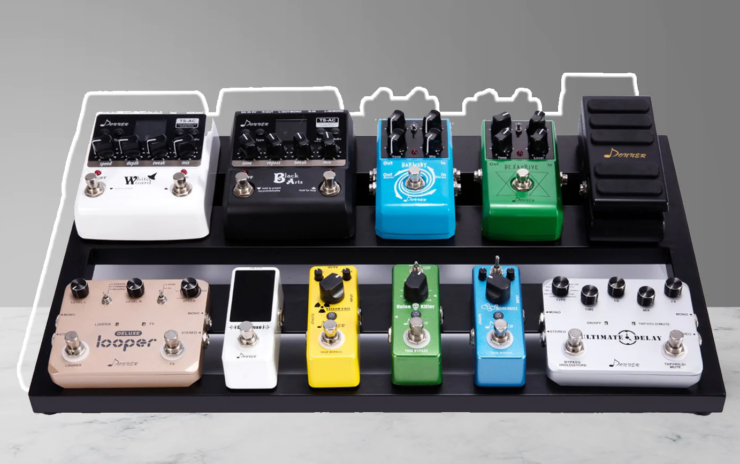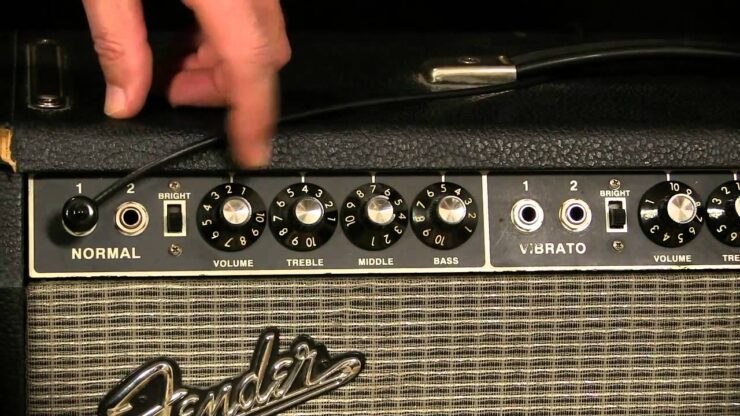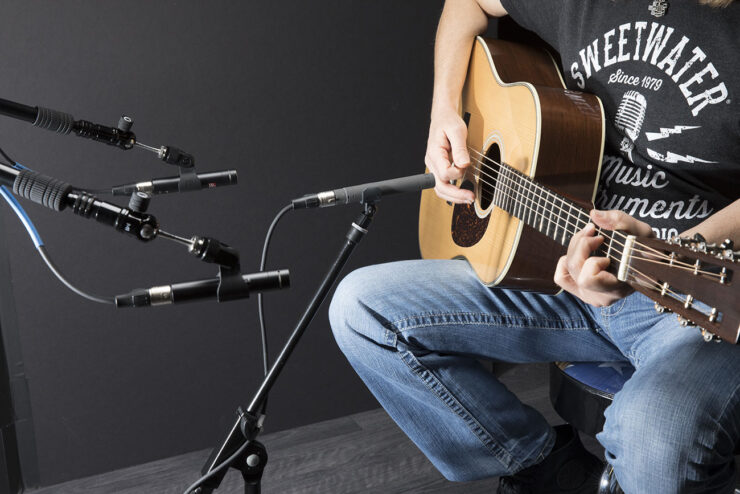Behind every mesmerizing guitar melody lies a captivating tapestry of art, science, and technical mastery. A quality guitar forms the foundation, but combining various crucial aspects helps enhance guitar tones and bring them to life.
From the subtle nuances of playing techniques to the precise selection of effects pedals, each element plays a vital role in sculpting the desired sonic landscape.
These factors create a harmonious symphony that resonates with the musician and the audience, transforming a simple melody into an unforgettable musical experience.
This article explores the rich guitar world where creativity intertwines with scientific precision, unlocking a symphony of sonic wonders that resonates in the souls of listeners.
Effects Pedals

Effects pedals are electronic devices that play a vital role in shaping and enhancing guitar tones. They are compact units that guitarists connect between their guitar and amplifier. Effects pedals modify the signal from the guitar, adding various effects to create a desired sonic result.
Many tonal effects are available, including distortion, delay reverb, and modulations- such as chorus, flanger, and phaser.
Each effect has unique characteristics and alters the sound differently, allowing guitarists to add depth, texture, and personality to their playing, ultimately expanding the instrument’s creative possibilities and expressive range.
You can contact Archer K Music, a one-stop shop for a wide selection of these musical devices, allowing guitarists to explore diverse sonic options.
Instrument Selection
Instrument Selection is a critical aspect of crafting articulate and harmonic guitar tones. Choosing a quality guitar with good tonal characteristics lays the foundation for achieving the desired sound.
Several factors need consideration, including tonewoods, pickups, and construction, as they directly influence the instrument’s sonic capabilities.
Tonewoods, such as mahogany or maple, contribute to the guitar’s resonance and timbre. Pickups, such as single-coil or humbucker, determine the output and character of the sound.
Also, the guitar’s construction, including factors like body shape and neck design, can impact playability and overall tone. By carefully considering these elements, guitarists can select an instrument that aligns with their musical vision and sets the stage for clear and expressive guitar tones.
Amplification

Amplification plays a crucial role in shaping the desired tonal characteristics of a guitar. An excellent amplifier or amp modeling technology is essential to achieve the desired sound.
Guitarists have various options, including tube amps, solid-state amps, or digital modeling, each offering distinct sonic possibilities.
Tube amps deliver warm and organic tones, while solid-state amps provide reliability and versatility. Digital modeling amps offer a vast range of amp simulations and effects.
The unique collaboration between guitar, music, and amplifiers creates an immersive sonic experience, where the amplifier becomes the vessel that amplifies the musician’s artistic expression, transforming it into a captivating musical journey.
Signal Chain Order and Mixing Techniques
Signal chain order and mixing techniques are essential in achieving a polished and balanced guitar tone within the music. Understanding the signal chain order involves arranging the sequence of effects pedals and other audio processors to maximize their effectiveness and minimize unwanted noise.
Considering factors such as gain staging, equalization, and panning helps to ensure clarity, balance, and separation of instruments within the mix.
For instance, balancing the levels of different tracks, applying appropriate equalization to shape frequencies, and panning instruments across the stereo field contribute to a professional and cohesive sound.
An example would be carefully arranging a signal chain with a distortion pedal followed by a modulation pedal and then applying precise mixing techniques to achieve a well-defined and captivating guitar tone in a recording or live performance.
Recording Techniques and Studio Processing

Recording techniques and studio processing play a vital role in capturing and enhancing the guitar tones found in music. When recording guitars, engineers and producers employ various microphone placement techniques to capture the desired sound.
The choice of microphone, such as dynamic, condenser, or ribbon, can greatly impact the tonal characteristics. Experimenting with different microphone positions, such as close-miking, room-miking, or a combination of both, allows for unique sonic textures.
In addition to microphone techniques, studio processing plays a significant role in shaping guitar tones. Engineers often use equalization (EQ), compression, and reverb to further refine the recorded guitar sound. EQ can be used to boost or attenuate specific frequencies, sculpting the tonal balance.
Compression helps control dynamics and adds sustain, while reverb creates a sense of space and ambience.
Exploring Alternative Tunings and Extended Techniques
While effects pedals, instrument selection, amplification, and signal chain order contribute significantly to the creation of guitar tones, exploring alternative tunings and extended techniques can unlock a whole new world of sonic possibilities.
Traditional guitar tuning (EADGBE) has its merits, but by venturing into alternative tunings, guitarists can discover fresh harmonic textures and uncover unexplored melodic paths.
Alternative tunings involve adjusting the standard pitch of the guitar strings, creating intervals that differ from the conventional tuning. Examples include open tunings like Open D (DADF#AD) or Open G (DGDGBD) favored by many slide guitar players, or unique tunings like DADGAD that provide rich, open sonorities.
These alternative tunings can inspire unique chord voicings, resonant drones, and intriguing harmonic progressions.
The Role of Playing Technique in Guitar Tones
While the equipment and tools used in creating guitar tones are essential, the role of playing technique should not be overlooked. The way a guitarist approaches the instrument and manipulates the strings can significantly influence the resulting sound and tonal characteristics.
One crucial aspect of playing technique is the attack or articulation of the notes. The manner in which the strings are struck or plucked can vary from a gentle and smooth touch to a more aggressive and percussive attack.
The intensity and speed of the attack can create variations in dynamics, sustain, and overall tonal response. Different playing techniques, such as palm muting, fingerpicking, or using a pick, also contribute to the tonal palette and can produce distinct timbres.

Takeaway
A reputable music shop plays a crucial role in unlocking captivating guitar tones. A good music shop provides access to music accessories, effects pedals, amplifiers, and expertise for achieving the desired sonic expression.
With their guidance, musicians can explore the art and science of guitar tones, discovering new dimensions of creativity and elevating their musical performances. Embrace the journey, and let the expertise of a trusted music shop be your gateway to a world of captivating sonic wonders.

